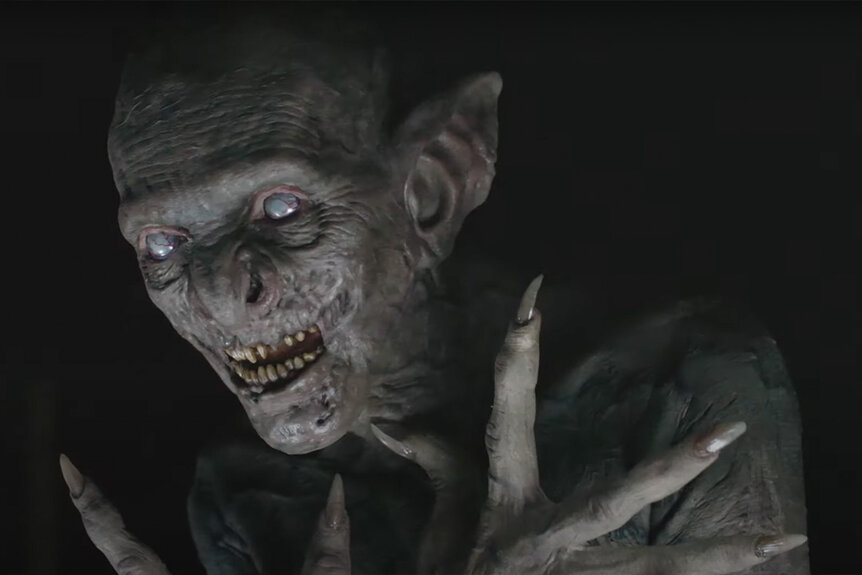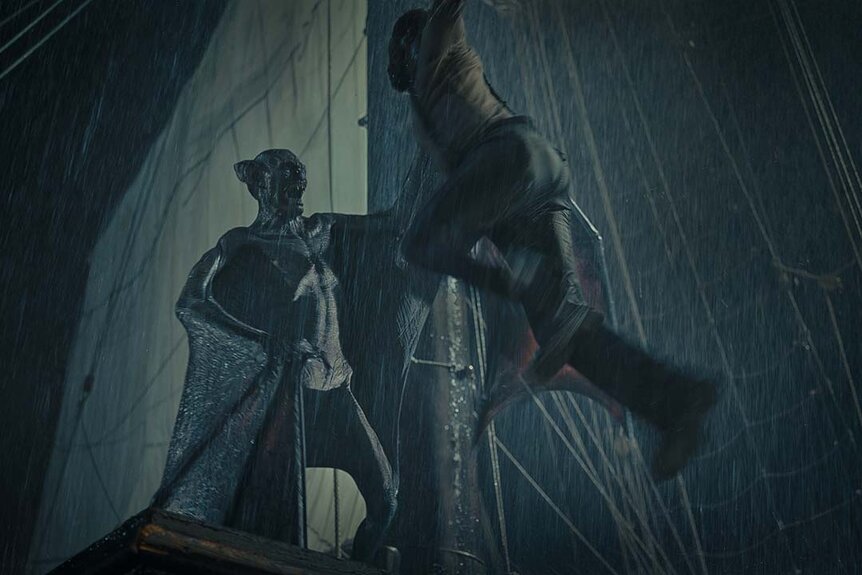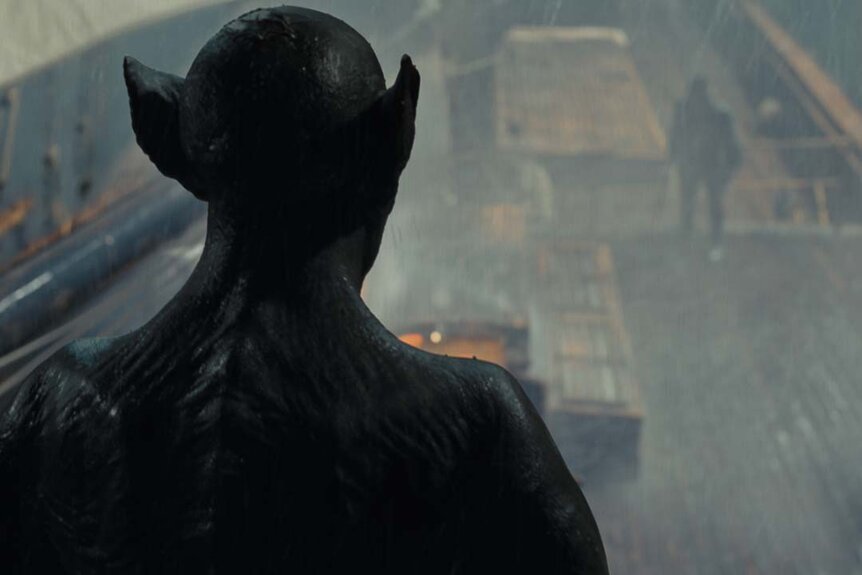Create a free profile to get unlimited access to exclusive videos, sweepstakes, and more!
The Real-Life Lore Behind Dracula in History
Sometimes history is stranger than fiction, particularly when it comes to Dracula.
Even more than a century after publication, the character of Count Dracula remains one of the most enduring ever created. Much like Dracula himself, the character is seemingly immortal. Lifted from the pages of Bram Stoker’s classic novel, Dracula and his descendants have graced the screen in countless film and TV adaptations, most recent of which is The Last Voyage of the Demeter, in theaters now!
While the character of Dracula has become an important part of literary history, the story itself has deep historical roots. Stoker drew on a mixture of mythology and actual historical events to craft his tale. In fact, there’s some evidence that Stoker was convinced the events of his story were literally true.
RELATED: Is The Last Voyage of the Demeter Based on a True Story?
Stoker’s original preface, published in the Icelandic version, reads in part: “I am quite convinced that there is no doubt whatever that the events here described really took place, however unbelievable and incomprehensible they might appear at first sight. And I am further convinced that they must always remain to some extent incomprehensible.”
Whether Stoker meant that literally or was playing a little fast and loose with authorial license is a question we may never have the answer to. In the meantime, we can pull back the curtain a little bit to find the monstrous truth behind Stoker’s immortal horror story.
Vampires Before Count Dracula
Tales of vampiric creatures have existed for centuries in Central Europe and in various forms around the world. In areas which are now part of modern day Romania, locals told stories of the strigoi, restless spirits risen from the grave. According to the lore, they could transform into animals, become invisible, and take their power from the blood of their victims.
In addition to being the name of a horrifying undead creature, strigoi also shares an etymological relationship with the Romanian word striga, which means “to scream.” Over time, strigoi have referred to witches and other supernatural creatures, but the name is mostly closely associated with what we would all think of as vampires.
The earliest known report of a strigoi comes from the seventeenth century, when Jure Grando Alilovic apparently tormented his hometown 16 years after he was meant to have died. Alilovic was captured by local priests and townspeople, and beheaded.
The Inspiration for Bram Stoker’s Dracula
Authors are often asked where they get their ideas. Most of the time they’re cagey, either because they don’t want to say or they don’t know themselves, but in the case of Bram Stoker we have some insight.
In 1890, Stoker visited the Subscription Library in Whitby, England in search of a particular book. The book in question isn’t likely to top any bestseller lists, not with a title like The Accounts of Principalities of Wallachia and Moldavia anyway, but it was important to Stoker. Moreover, the book was rare, its presence in the library unadvertised, and could only be viewed under supervision. Stoker apparently asked for the book, opened it to a specific section, took down a few notes, and returned it.
RELATED: The Last Voyage of the Demeter is Basically Alien, Just Set in the 1800s on a Ship
After the library, Stoker stopped over at the Whitby Museum where he looked at some maps and built a narrative path starting in London and ending on a spooky mountain top in Transylvania. You may have heard of it.
Finally, Stoker went to Whitby Harbor. There, he spoke with several members of the Royal Coast Guard. He was fishing for details about the sailing vessel Dmitri. It ran aground a few years prior with only a few of the crew having survived their journey. The ship was carrying crates of dirt and the crew reported seeing a large black dog leap from the ship and run away when they reached the shore.
If you read the last paragraph, you’ve basically seen the trailer for The Last Voyage of the Demeter. Stoker’s trip through Whitby, with its various targeted pit stops, provided critical details which went on to inform parts of his story. And, thanks to that boring-sounding book from the library, Stoker had found his story’s name.
While The Accounts of Principalities of Wallachia and Moldavia doesn’t mention Vlad III (commonly known as Vlad the Impaler) by name, it does mention the surname Dracula. That’s where Stoker found his name and where the connection to Vlad III begins.
Vlad the Impaler, the Real-Life Count Dracula
The man who would become known as Dracula was born the second son of Vlad II, ruler of Wallachia, part of modern-day Romania. He was born in 1431, possibly in Transylvania, though he never owned property there and certainly didn’t live in the castle which now stands there.
The same year of his birth, his father was inducted into the knightly Order of the Dragon. As part of the induction, Vlad II was given the new surname Dracul. In 1442, Vlad II was called to a meeting with the Ottoman Sultan Murad II, and he decided to take his two young sons, Vlad III and Radu, with him.
Unfortunately, the whole thing was a trap designed to subdue Vlad II. All three of them were arrested, but Vlad II was released on the condition that his two sons were taken as royal hostages.
They were treated well under Ottoman captivity, educated and taught valuable skills. The conditions were such that Radu apparently became enamored of the Ottomans, integrating well into their society.
Vlad III, on the other hand, resented his captivity. It’s likely his continued vendetta against the Ottomans throughout his life was motivated at least in part, by this time in his life.
When his father and older brother were killed at the hands of usurper Vladislav II, Vlad returned home on a campaign to reclaim his father’s seat as ruler of Wallachia. The effort had fits and starts, with Vlad ruling temporarily before being ousted, but eventually he emerged victorious. Vlad bested Vladislav II in hand-to-hand combat, avenging his father and reclaiming the throne.
RELATED: The Last Voyage of the Demeter Images and Featurette Reveal "Scariest Depiction of Dracula Ever"
Vlad’s rule was immediately decisive. He stopped paying tribute to the Ottoman sultan and put his own house in order in spectacularly bloody fashion. Vlad gathered his noblemen, accused them of disunity threatening the kingdom, and executed as many as 500, though it could be as few as 50.
That was just the beginning. Vlad III was known as a just but vicious ruler, perfectly willing to use torture and mutilation to punish and frighten his enemies. It is said that he impaled tens of thousands of people on spikes over the course of his reign. He even, allegedly, dipped his bread in the blood of his victims, though that’s likely a popular invention.
Like his father before him, Vlad III was also inducted into the Order of the Dragon and given a new surname. He chose the name “son of Dracul,” in honor of his father. He emerged as Vlad Drăculea or, in the modern parlance, Dracula.
Find out what those sailors told Stoker in The Last Voyage of the Demeter, in theaters now!

































